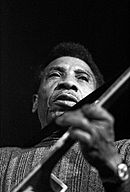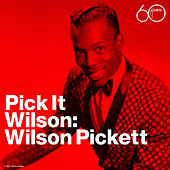
Rhythm and blues, often abbreviated to R&B and RnB, is a genre of popular African-American music that originated in the 1940’s. The term was originally used by record companies to describe recordings marketed predominantly to urban African Americans, at a time when “urbane, rocking, jazz based music with a heavy, insistent beat” was becoming more popular.
The term has subsequently had a number of shifts in meaning. In the early 1950’s, the term rhythm and blues was frequently applied to blues records. Starting in the mid-1950’s, after this style of music contributed to the development of rock and roll, the term “R&B” became used to refer to music styles that developed from and incorporated electric blues, as well as gospel and soul music. By the 1970’s, rhythm and blues was used as a blanket term for soul and funk. In the 1980’s, a newer style of R&B developed, becoming known as “Contemporary R&B”.
Etymology
Jerry Wexler of Billboard magazine coined the term “rhythm and blues” in 1948 as a musical marketing term in the United States. It replaced the term “race music”, which originally came from within the black community, but was deemed offensive in the postwar world. The term “rhythm and blues” was used by Billboard in its chart listings from June 1949 until August 1969, when its “Hot Rhythm & Blues Singles” chart was renamed as “Best Selling Soul Singles”.
Writer/producer Robert Palmer defined rhythm & blues as “a catchall term referring to any music that was made by and for black Americans”. He has used the term “R&B” as a synonym for jump blues. However, Allmusic separates it from jump blues because of its stronger, gospel-esque backbeat. Lawrence Cohn, author of Nothing but the Blues, writes that “rhythm and blues” was an umbrella term invented for industry convenience. According to him, the term embraced all black music except classical music and religious music, unless a gospel song sold enough to break into the charts. Well into the 21st century, the term R&B continues in use (in some contexts) to categorize music made by black musicians, as distinct from styles of music made by other musicians.
 In the commercial rhythm and blues music typical of the 1950’s through the 1970’s, the bands usually consisted of piano, one or two guitars, bass, drums, and saxophone. Arrangements were rehearsed to the point of effortlessness and were sometimes accompanied by background vocalists. Simple repetitive parts mesh, creating momentum and rhythmic interplay producing mellow, lilting, and often hypnotic textures while calling attention to no individual sound. While singers are emotionally engaged with the lyrics, often intensely so, they remain cool, relaxed, and in control. The bands dressed in suits, and even uniforms, a practice associated with the modern popular music that rhythm and blues performers aspired to dominate. Lyrics often seemed fatalistic, and the music typically followed predictable patterns of chords and structure.
In the commercial rhythm and blues music typical of the 1950’s through the 1970’s, the bands usually consisted of piano, one or two guitars, bass, drums, and saxophone. Arrangements were rehearsed to the point of effortlessness and were sometimes accompanied by background vocalists. Simple repetitive parts mesh, creating momentum and rhythmic interplay producing mellow, lilting, and often hypnotic textures while calling attention to no individual sound. While singers are emotionally engaged with the lyrics, often intensely so, they remain cool, relaxed, and in control. The bands dressed in suits, and even uniforms, a practice associated with the modern popular music that rhythm and blues performers aspired to dominate. Lyrics often seemed fatalistic, and the music typically followed predictable patterns of chords and structure.






